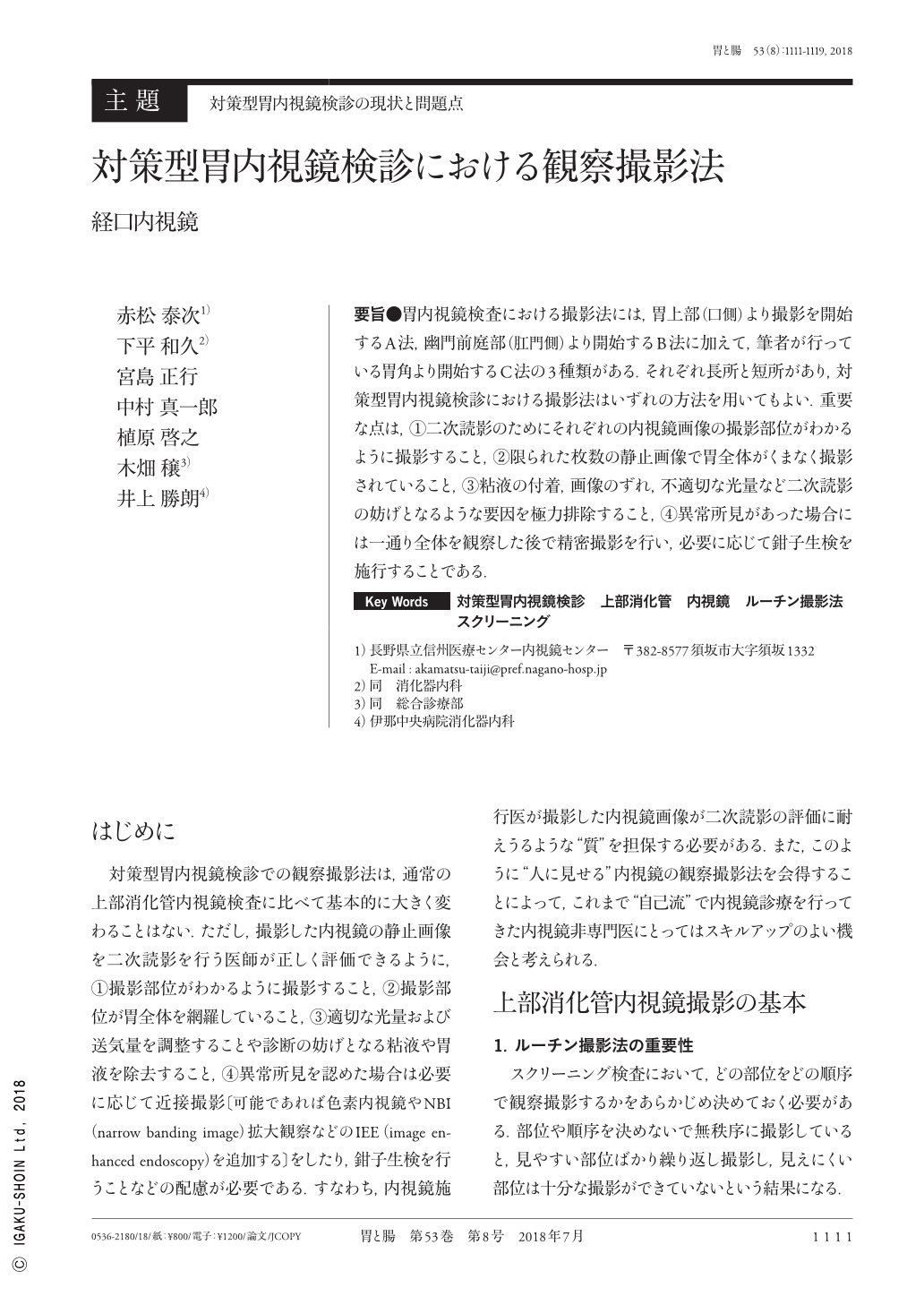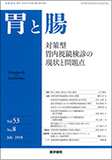Japanese
English
- 有料閲覧
- Abstract 文献概要
- 1ページ目 Look Inside
- 参考文献 Reference
- サイト内被引用 Cited by
要旨●胃内視鏡検査における撮影法には,胃上部(口側)より撮影を開始するA法,幽門前庭部(肛門側)より開始するB法に加えて,筆者が行っている胃角より開始するC法の3種類がある.それぞれ長所と短所があり,対策型胃内視鏡検診における撮影法はいずれの方法を用いてもよい.重要な点は,①二次読影のためにそれぞれの内視鏡画像の撮影部位がわかるように撮影すること,②限られた枚数の静止画像で胃全体がくまなく撮影されていること,③粘液の付着,画像のずれ,不適切な光量など二次読影の妨げとなるような要因を極力排除すること,④異常所見があった場合には一通り全体を観察した後で精密撮影を行い,必要に応じて鉗子生検を施行することである.
Routine observation and photography of the upper GI endoscopy can be performed by three methods, namely A, B, and C. Endoscopic images are obtained from the oral site of the stomach to its anal site in the method A, whereas these are obtained from the anal site of the stomach to its oral site in the method B. In the recommended method C, the observation and photography of the stomach angle are performed first ; followed by that of the antrum and duodenum ; the whole body ; and, lastly, the cardiac portion and fornix by reversing the direction of the endoscope. As each method has its own advantages and disadvantages, standardizing the methods in gastric cancer screening is imperative. Some crucial points are as follows:(a)the endoscopic photography technique should render each region comprehensible to a second judging doctor ; (b)all gastric parts should be included during endoscopic photography ; (c)an adequate degree of brightness, the cleaning of endoscopic lens, and the removal of attached mucous on the gastric mucosa surface should be ensured ; and(d)abnormal endoscopic findings must be prudently examined using adjacent observation and image-enhanced endoscopy post stomach screening.

Copyright © 2018, Igaku-Shoin Ltd. All rights reserved.


